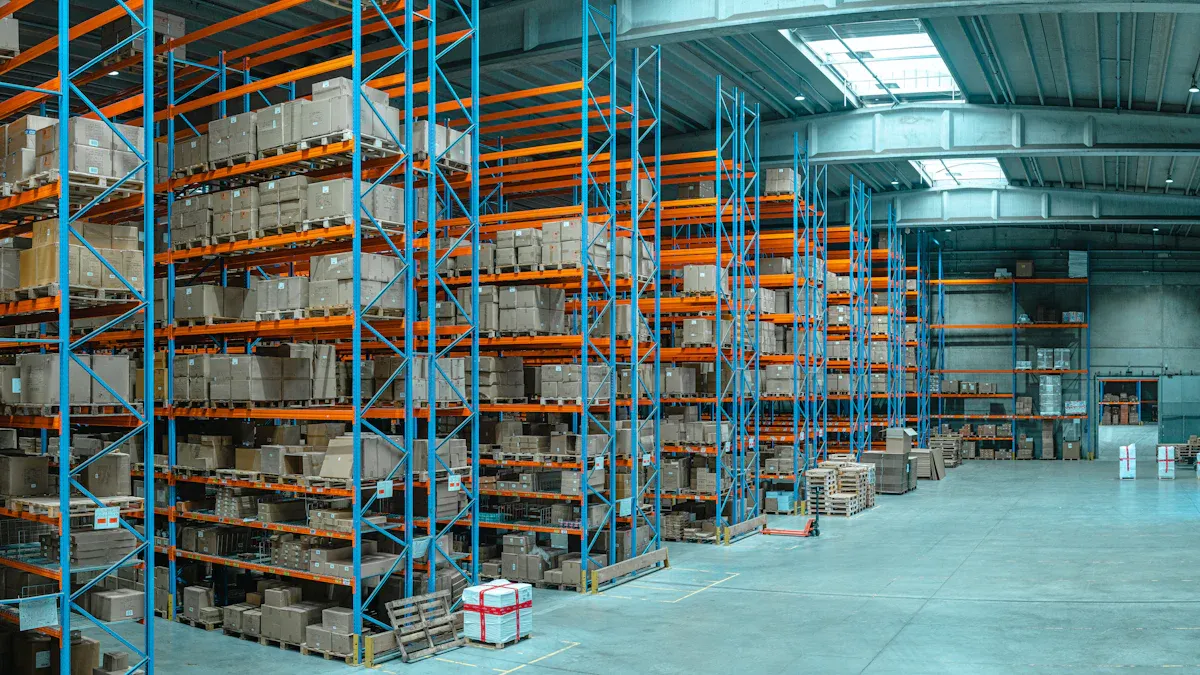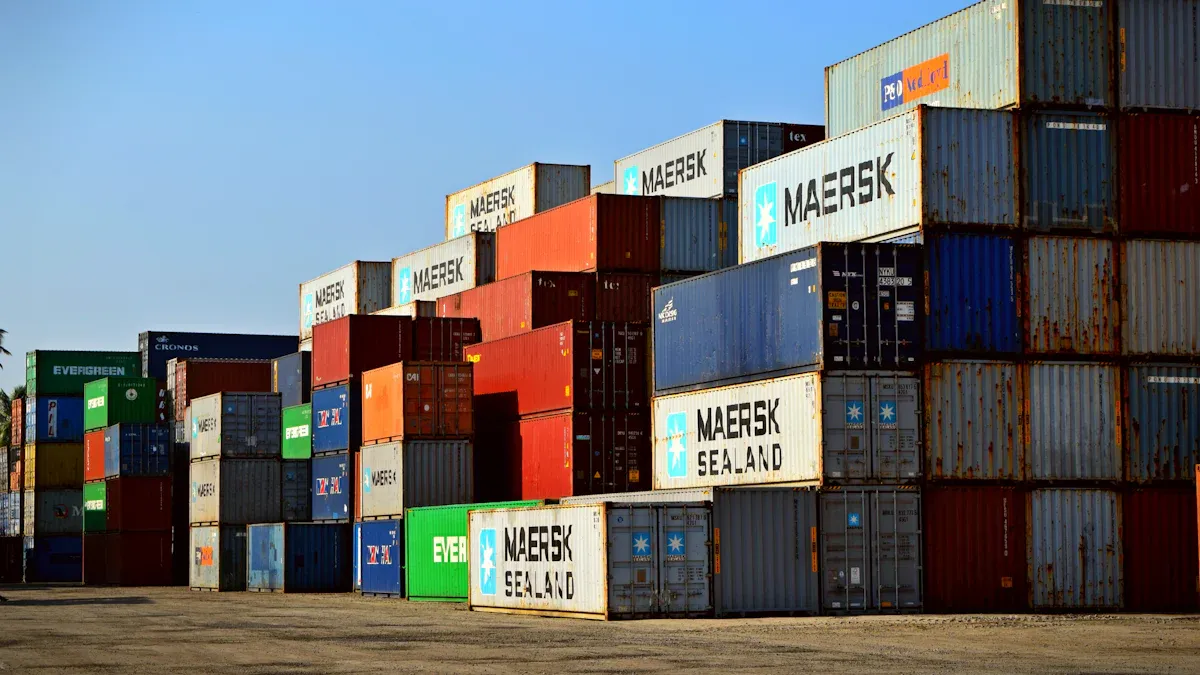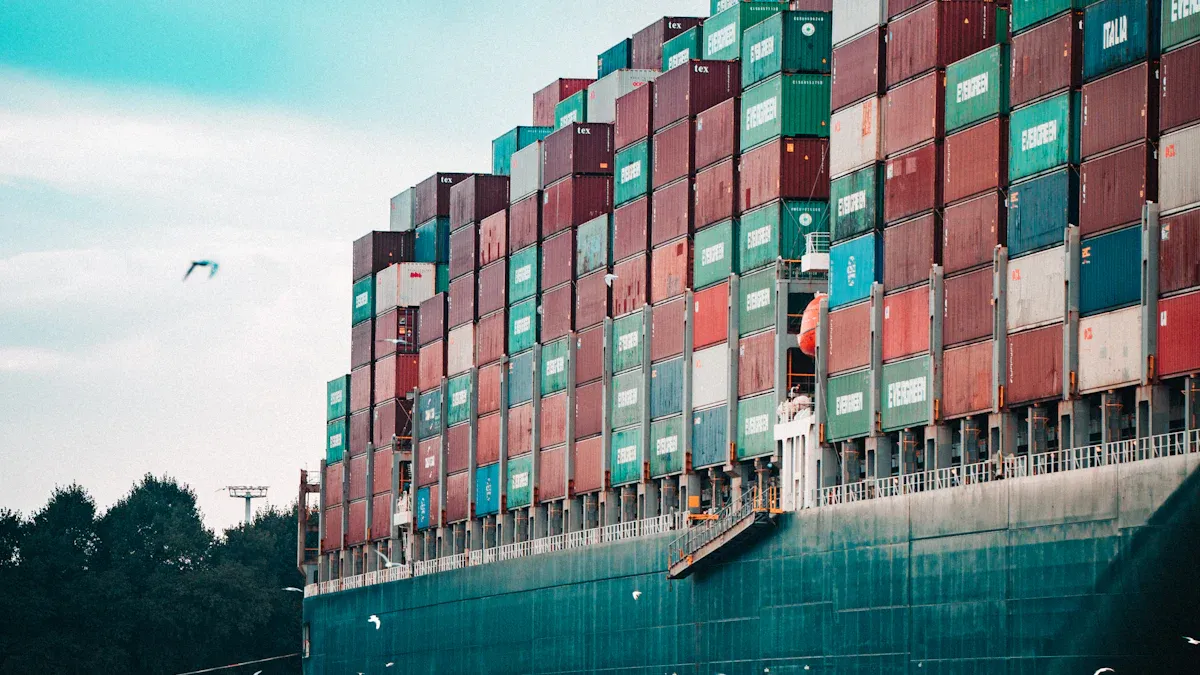
Selecting the right Injection Molding Suppliers can significantly impact your business's success. Understanding the pros and cons of overseas suppliers allows you to make informed decisions that align with your goals. Top-performing companies demonstrate the importance of this analysis. They generate 69% more revenue, achieve 87% higher sales per machine, and maintain profit margins of 16% compared to just 1% for others. To replicate this success, you must evaluate suppliers carefully. Assess their capabilities, reputation, and supply chain processes to ensure they meet your cost and quality expectations.

One of the most significant advantages of overseas injection molding suppliers is the potential for cost savings. Many businesses choose overseas suppliers because they offer lower labor and material costs compared to domestic options. These savings can make a substantial difference, especially for companies producing high volumes of products.
Overseas suppliers often benefit from streamlined production processes, which lead to faster turnaround times. Additionally, favorable exchange rates can further enhance profitability for U.S.-based companies. The table below highlights some of the key benefits that contribute to cost savings:
| Benefit | Description |
|---|---|
| Lower labor and material costs | Significant reduction in production expenses due to cheaper resources. |
| Efficient production process | Streamlined operations leading to faster turnaround times. |
| Favorable exchange rates | Currency advantages that enhance profitability for U.S. companies. |
By leveraging these factors, you can reduce production costs while maintaining competitive pricing in the market. However, it is essential to weigh these savings against potential risks, such as quality control issues or hidden costs.
Overseas markets often provide access to skilled labor and advanced molds, which can improve the quality of your products. Many countries have specialized manufacturing hubs where workers possess extensive experience in injection molding. These skilled professionals can create complex molds and ensure precise production.
However, the level of expertise and quality can vary between regions. For example, North American moldmakers typically have a senior workforce with more experience, while Chinese moldmakers may face challenges like high turnover rates and less experienced workers. The table below compares key aspects of moldmaking between these regions:
| Aspect | North American Moldmakers | Chinese Moldmakers |
|---|---|---|
| Workforce Experience | Senior workforce with 3-5 times more experience | High turnover, rare senior moldmakers |
| Mold Design Philosophy | Designed for functionality and long-term use | Focused on lower volumes, less serviceable |
| Material Quality | High-quality materials readily available | Inferior materials often substituted |
| Cycle Times | Optimized for efficiency | Longer cycle times due to design issues |
| Cost Structure | Flexible payment terms | Full payment required before shipment |
| Quality Control | Guarantees work, conducts multiple trials | No guarantees, often requires rework |
Understanding these differences can help you select the right supplier for your needs. If you prioritize quality and long-term reliability, you may need to carefully evaluate the capabilities of overseas suppliers.
Overseas suppliers often operate in manufacturing hubs capable of handling large production volumes. This scalability allows businesses to achieve economies of scale, reducing the unit price of each product. For companies aiming to expand into new markets or grow rapidly, this advantage can be crucial.
When you work with suppliers who can manage high-volume production, you benefit from lower costs per unit and increased efficiency. This approach is particularly beneficial for industries that require consistent, large-scale production to meet market demand. By leveraging economies of scale, you can enhance your competitiveness and profitability.
When you work with overseas injection molding suppliers, you gain access to global resources and markets. This advantage can significantly enhance your production capabilities and open doors to new opportunities. Many overseas suppliers operate in regions with abundant raw materials, advanced technologies, and specialized expertise. These factors can improve the efficiency and quality of your injection molding processes.
The global injection molding machine market is growing rapidly, with a projected compound annual growth rate (CAGR) of 5.10% from 2022 to 2029. Developing economies like India and China are driving this growth due to increased demand for injection-molded products. Industrialization, technological advancements, and government investments in research and development also play a crucial role. By partnering with overseas suppliers, you can tap into these thriving markets and benefit from their expanding industries.
Accessing global resources allows you to source high-quality materials at competitive prices. For example, some regions specialize in producing specific types of plastics or resins that may not be readily available in your local market. This access ensures you can meet your production needs without compromising on quality. Additionally, overseas suppliers often have advanced machinery and tools that can handle complex designs and large-scale production.
Expanding into global markets also diversifies your customer base and reduces dependency on a single region. This diversification minimizes the risk of disruptions caused by local economic downturns or supply chain issues. It also enables you to explore new industries and applications for injection molding technology, such as automotive, healthcare, and consumer goods.
To fully leverage these benefits, you need to carefully evaluate the pros and cons of working with overseas suppliers. Consider factors like communication barriers, lead times, and quality control measures. By doing so, you can make informed decisions that align with your business goals and minimize potential risks.

When working with overseas injection molding suppliers, you may encounter longer lead times and unexpected delays. The sourcing process alone can take several months. Searching for a suitable supplier, preparing a detailed request for quote (RFQ), and finalizing contracts all add to the timeline. Once production begins, shipping the finished molds or products across international borders introduces further delays. Customs clearance, transportation logistics, and unforeseen disruptions can extend delivery times significantly.
These delays can disrupt your production schedule and affect your ability to meet customer demands. For example, if you rely on just-in-time manufacturing, longer lead times could result in inventory shortages. To mitigate this risk, you should plan for extended timelines and build flexibility into your supply chain. While overseas suppliers may offer cost advantages, the time factor is a critical drawback to consider.
Ensuring better quality control can be challenging when working with overseas suppliers. Differences in manufacturing standards, material availability, and production practices often lead to inconsistencies in the final product. For instance, some suppliers may substitute inferior materials to cut costs, which can compromise the durability and functionality of your molds or products. Without direct oversight, identifying and addressing these issues becomes more difficult.
You might also face challenges in conducting thorough inspections. Overseas suppliers may not always provide detailed quality reports or allow frequent audits. This lack of transparency increases the risk of receiving defective products. To address this, you should establish clear quality standards and request prototypes before full-scale production. Partnering with a third-party inspection service can also help ensure compliance with your requirements.
Communication barriers and time zone differences can significantly impact your collaboration with overseas injection molding suppliers. Language differences may lead to misunderstandings about technical specifications or production timelines. Even minor miscommunications can result in costly errors or delays. Time zone differences further complicate matters, as they limit the availability of real-time communication. Late-night meetings and delayed responses can slow down decision-making and hinder operational efficiency.
Domestic tooling offers a clear advantage in this regard. It eliminates time zone challenges and ensures timely communication with vendors. When you work with local suppliers, you can address issues promptly and maintain better control over the production process. If you choose to work with overseas suppliers, consider using digital tools like project management software to streamline communication. Setting clear expectations and maintaining regular updates can also help bridge the gap.
When working with overseas injection molding suppliers, protecting your intellectual property (IP) becomes a significant concern. Many countries have weaker IP laws compared to the United States, making it easier for unauthorized parties to copy your designs or molds. This risk can lead to counterfeit products entering the market, damaging your brand reputation and reducing your competitive edge.
You may also face challenges in enforcing IP rights overseas. Legal systems in some regions lack the infrastructure to handle IP disputes effectively. Even when laws exist, the enforcement process can be slow and costly. For example, filing a lawsuit in a foreign country often requires hiring local legal experts, translating documents, and navigating unfamiliar legal procedures. These hurdles make it difficult to protect your designs and innovations.
To minimize this risk, you should take proactive steps. Start by registering your patents, trademarks, and copyrights in the countries where your suppliers operate. This legal protection strengthens your position if disputes arise. Additionally, include non-disclosure agreements (NDAs) and confidentiality clauses in your contracts. These agreements ensure that your suppliers cannot share your designs or production methods with competitors.
Another effective strategy involves working with suppliers who have a proven track record of respecting IP rights. Research their reputation and ask for references from other clients. You can also consider using digital tools to track your products and detect counterfeits. By taking these precautions, you can safeguard your intellectual property while benefiting from the cost advantages of overseas suppliers.
While overseas injection molding suppliers often promise lower production costs, hidden expenses can quickly add up. These costs can erode the financial benefits you initially expected. Understanding these hidden factors is crucial for making informed decisions.
One major hidden cost involves shipping. Transporting molds or finished products across international borders can be expensive. High transportation costs, customs fees, and the risk of product damage during transit all contribute to this expense. In some cases, you may need to pay for emergency air freight to meet tight deadlines, further increasing costs.
Quality problems also represent a significant hidden cost. Products manufactured overseas often have higher defect rates compared to those made domestically. Addressing these defects requires additional time and resources, such as reworking faulty products or replacing defective molds. These issues not only increase costs but also delay your production schedule.
Rising wages in countries like China have also impacted the cost-effectiveness of offshore production. While labor costs in these regions remain lower than in the U.S., the gap is narrowing. This trend reduces the financial advantage of working with overseas suppliers.
Planning and forecasting challenges add another layer of hidden costs. The distance between you and your supplier makes it harder to coordinate production schedules and respond to changes in demand. These inefficiencies can lead to overproduction, underproduction, or missed deadlines, all of which increase costs.
The table below summarizes these hidden cost factors:
| Hidden Cost Factor | Description |
|---|---|
| Shipping Issues/Costs | High transportation costs, risk of product damage, customs barriers, and emergency air freight costs. |
| Quality Problems | Higher defect rates in products manufactured overseas compared to U.S. standards. |
| Increase in Overseas Wages | Rising wages in countries like China, impacting cost-effectiveness of offshore production. |
| Overall Efficiency | Challenges in planning and forecasting due to distance, leading to increased costs and inefficiencies. |
To address these hidden costs, conduct a thorough cost analysis before committing to an overseas supplier. Evaluate the total landed cost, which includes production, shipping, and additional expenses. This approach helps you understand the true financial impact of your decision. By carefully weighing the pros and cons, you can choose a supplier that aligns with your business goals and minimizes risks.
When selecting an injection molding supplier, you must evaluate how complex your product is and the quality standards it requires. Products with intricate designs or tight tolerances demand higher precision during manufacturing. Advanced tools like CAD and CAM software play a vital role in ensuring accurate mold designs and defect-free production. These tools help suppliers meet the rigorous quality standards necessary for complex parts.
Good mold design is equally important. It ensures that the final product meets market demands without compromising durability or functionality. Suppliers with expertise in custom injection molding can handle complex projects more effectively. By prioritizing quality and precision, you reduce the risk of defects and improve customer satisfaction.
Understanding the total landed costs is essential when choosing a supplier. While overseas suppliers may offer lower production costs, additional expenses like shipping, customs fees, and quality inspections can add up. Conducting a thorough cost analysis helps you identify hidden costs and make informed decisions.
To ensure the material and process align with your budget, follow these steps:
1. Understand your product's requirements, including strength and durability.
2. Research available materials and their applications.
3. Evaluate the molding process to ensure compatibility with your chosen material.
4. Consider the environmental impact of your material choices.
5. Consult with experts to refine your decisions.
By analyzing these factors, you can balance cost savings with quality and reliability.
Supply chain resilience is critical for maintaining consistent production. You need to assess potential risks, such as delays, material shortages, or geopolitical issues, that could disrupt your supply chain. Diversifying your supplier base can help you mitigate these risks and adapt to changing market conditions.
Working with suppliers who have a proven track record of reliability ensures smoother operations. Evaluate their ability to meet deadlines and handle unexpected challenges. Building strong relationships with your suppliers also fosters better communication and trust, which are essential for long-term success.
By focusing on resilience and risk management, you can create a supply chain that supports your business goals and adapts to market demands.
Ensuring regulatory and legal compliance for molds is essential for your injection molding operations. Non-compliance can lead to fines, lawsuits, or production shutdowns. You must address several key areas to meet legal requirements effectively.
You should also stay updated on local and international regulations. Laws often change, and keeping track of updates ensures your operations remain compliant. Collaborating with legal experts can help you navigate complex requirements and avoid costly mistakes.
Environmental and ethical considerations play a vital role in injection molding. Customers increasingly prefer businesses that prioritize sustainability and ethical practices. Addressing these concerns can enhance your reputation and expand your market presence.
Reducing environmental impact starts with material selection. Using biodegradable or recyclable plastics minimizes waste. You can also adopt energy-efficient machinery to lower carbon emissions during production. Proper disposal of hazardous materials prevents pollution and aligns with environmental regulations.
Ethical practices involve fair treatment of workers and transparent business operations. You should ensure safe working conditions and fair wages for employees. Partnering with suppliers who share these values strengthens your ethical commitment. Highlighting these efforts in your marketing strategy can attract environmentally conscious customers.
By focusing on sustainability and ethics, you not only comply with regulations but also build trust with your audience. These practices position your business as a responsible player in the market, giving you a competitive edge.
Overseas injection molding suppliers offer clear advantages, such as lower production costs, access to skilled labor, and economies of scale. However, drawbacks like longer lead times, quality control issues, and intellectual property risks can complicate your operations.
| Advantages | Drawbacks |
|---|---|
| Lower Production Costs | Longer Lead Times |
| Access To A Bigger Labor Pool | Quality Control Issues |
| Economies Of Scale | Intellectual Property Risks |
To make the right choice, align your supplier selection with your business goals and risk tolerance. Conduct cost-benefit analyses, request prototypes to verify quality, and establish clear communication channels to ensure smooth collaboration.
The primary advantage is cost savings. Overseas suppliers often offer lower labor and material costs. This can significantly reduce production expenses, especially for high-volume manufacturing. Additionally, many overseas suppliers operate in regions with advanced manufacturing capabilities, which can improve efficiency.
Request prototypes before full production begins. Establish clear quality standards and communicate them in detail. Partner with third-party inspection services to verify compliance. Regular audits and detailed quality reports also help maintain product standards.
Yes, you can reduce lead times by planning ahead and maintaining open communication. Work with suppliers who have a proven track record of meeting deadlines. Use expedited shipping options when necessary, and build flexibility into your supply chain to handle delays.
Register your patents and trademarks in the supplier's country. Include non-disclosure agreements (NDAs) and confidentiality clauses in contracts. Research the supplier’s reputation for respecting intellectual property. Use digital tools to monitor your products and detect potential counterfeits.
Hidden costs include shipping fees, customs duties, and quality control expenses. Rising wages in some regions and inefficiencies in planning can also increase costs. Conduct a total landed cost analysis to understand the full financial impact of working with overseas suppliers.